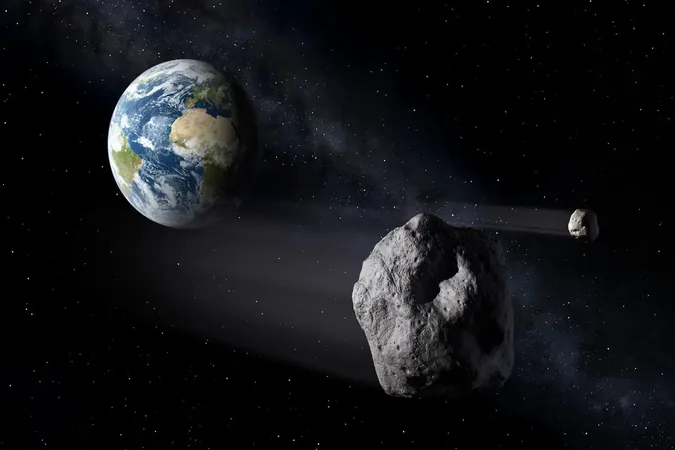
Why Most Carbon-Rich Asteroids Disappear Before Reaching Earth—New Discoveries Revealed!
2025-04-14
Author: Wei
Asteroids Galore but Missing Carbon-Rich Gems?
In a groundbreaking revelation, astronomers have discovered that Earth's collection of meteorites has a substantial bias. Surprisingly, despite the abundance of carbonaceous asteroids throughout our solar system, only a mere 4% of meteorites found on Earth are carbon-rich.
The Shocking Truth Behind the Discrepancy!
A research team has delved into the mysteries of these elusive meteorites, unveiling why they rarely make it to the Earth's surface. Their study, published in Nature Astronomy, reveals that these carbon-laden rocks often disintegrate before they can land—either being obliterated by the Sun’s intense heat or burning up upon entering Earth's atmosphere.
"We've always suspected that these weak, carbonaceous materials struggle to survive atmospheric entry," remarked Hadrien Devillepoix from Australia’s Curtin Institute of Radio Astronomy. He added, "But our research demonstrates that many of these meteoroids don’t even make it that far; they break apart due to the repeated heating as they approach the Sun."
Analyzing a Cosmic Mystery!
To shed light on this phenomenon, the team meticulously examined nearly 8,000 meteoroid impacts along with 540 potential falls using 19 observation networks worldwide. Their findings underscore the challenges faced by fragile carbon-rich asteroids.
A Treasure Trove of Knowledge from Space!
Carbon-rich meteorites hold immense scientific value, offering insights into some of the oldest materials known within our solar system. Moreover, missions such as Japan’s Hayabusa2 and NASA’s OSIRIS-REx have successfully gathered samples from distant asteroids, enabling researchers to study these materials more comprehensively than what remote observations can provide.
Patrick Shober of the Paris Observatory highlighted, "Carbon-rich meteorites are among the most chemically primitive materials available for study—they contain water, organic molecules, and even amino acids." He cautioned, however, that the scarcity of these meteorites in collections may lead to an incomplete understanding of the origins of life on our planet.
Fragility in Space!
Further analysis indicated that meteoroids formed by tidal disruption—events where asteroids are torn apart by a planet's gravitational forces—are particularly delicate, making them even less likely to survive their atmospheric journey compared to other asteroid types.
Ultimately, only the sturdiest carbon-rich asteroids manage to reach Earth after braving both the Sun's scorching temperatures and the fiery trials of atmospheric entry. If astronomers hope to gain a clearer picture of the variety of carbon-rich materials in space, they must expand their research to include those that vanish before ever landing on our planet.




 Brasil (PT)
Brasil (PT)
 Canada (EN)
Canada (EN)
 Chile (ES)
Chile (ES)
 Česko (CS)
Česko (CS)
 대한민국 (KO)
대한민국 (KO)
 España (ES)
España (ES)
 France (FR)
France (FR)
 Hong Kong (EN)
Hong Kong (EN)
 Italia (IT)
Italia (IT)
 日本 (JA)
日本 (JA)
 Magyarország (HU)
Magyarország (HU)
 Norge (NO)
Norge (NO)
 Polska (PL)
Polska (PL)
 Schweiz (DE)
Schweiz (DE)
 Singapore (EN)
Singapore (EN)
 Sverige (SV)
Sverige (SV)
 Suomi (FI)
Suomi (FI)
 Türkiye (TR)
Türkiye (TR)
 الإمارات العربية المتحدة (AR)
الإمارات العربية المتحدة (AR)